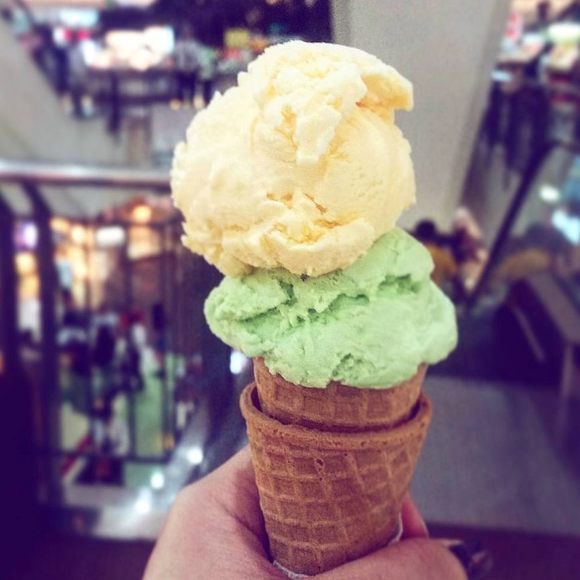6 Ice Creams That Make Everything Else Seem Vanilla
From garlic to cheese, these unusual flavors are regional favorites.

Some ice cream flavors are popular across the world. Others maintain a small, but loyal following in their place of origin. Even if the fanbase never grows, local pride in regional ingredients can keep unlikely flavors alive. From New England’s medicinal berries (once popular in perfumed gum) to Northern California’s abundance of fresh garlic, any resource is fair game for consideration.
Whether it’s a lack of widespread appeal or a crucial ingredient that doesn’t travel well, these flavors and styles are difficult to find outside their homes. You have to go straight to the source. Keep an eye out for these regional favorites on your next (rocky) road trip. A world far more interesting than vanilla exists if you know where to look.

Tigertail
Tigers (and their tails) are native to Asia, but tigertail ice cream is Canadian to its core. After the First Canadian Army helped liberate the Netherlands during the Second World War, some Dutch families immigrated to Canada to begin anew. With them came licorice, which Canadian soda fountains swirled into orange ice cream. Most popular from the 1950s to 1970s, the citrusy, slightly herbal ice cream is now a nostalgic treat for those raised in the Great White North. Elsewhere, the orange-and-black-striped flavor is almost entirely unknown.

Superman
One scoop can make any kid feel like a hero—and any Midwesterner feel like a kid again. But this comically bright delight isn’t just a color show; it’s three distinct ice cream flavors blended together. A Detroit brewery produced the first-known combination during Prohibition, when beer sales were a little flat. They swirled together a trio of Faygo Red Pop, yellow lemon, and Blue Moon ice creams (the latter of which is a Midwestern mystery flavor that fans liken to everything from Froot Loops to marshmallows). Today, creameries sell the iconic color set in other flavors, but it’s still tough to track down outside the Midwest.

Keso
Double the dairy, double the fun. In the Philippines, grocery stores and street vendors sell a blend of sweet cream and cheddar ice cream (sometimes studded with actual shreds of cheese) alongside flavors such as chocolate and vanilla. Millions of Pinoy ice cream fans eat salty-sweet scoops of keso (from the phonetic spelling of the Spanish queso) stuffed inside pillowy bread rolls called pan de sal. Some even liken the tangy, savory balance it creates to a slice of cheesecake.

Dondurma
Reaching for a cone of dondurma may leave you empty-handed.
Turkey’s taffy-like ice cream contains salep and mastic—powdered orchid bulbs and pine resin—which render it slow-melting, elastic, and thick enough to cut with a fork and knife. The finished product is so sticky that vendors often make a show out of it, playing tricks on customers using sleights of hand and misdirection to keep the twirling cones just out of reach. Don’t be deterred: Good things come to those who wait.

Teaberry
Some remember teaberry’s minty spice as an old-fashioned favorite; others think it tastes like a pain reliever made with wintergreen. These crimson berries grow on an evergreen plant native to New England, but taste like neither tea nor berries. Pennsylvanians love them in ice cream, though their shocking pink hue and medicinal flavor is scarcely known outside the Mid-Atlantic. As polarizing as it sounds, the flavor was ubiquitous in the 1960s, appearing in sweets, cure-alls, and gum.

Garlic
The town of Gilroy in Northern California is the self-proclaimed “Garlic Capital of the World.” Stores, farmers’ markets, and an annual festival all pay tribute to the fragrant bulb. Despite garlic’s almost exclusive presence in savory food, the town doesn’t stop at spaghetti dinner. Even their ice cream is laced with it. Fans say the subtle, nutty kick adds a rich and buttery element to a predominantly vanilla base, but critics find the aftertaste disturbing. Other garlic-infused flavors include chocolate, roasted almond, pistachio, and pecan praline.
Gastro Obscura covers the world’s most wondrous food and drink.
Sign up for our email, delivered twice a week.






















Follow us on Twitter to get the latest on the world's hidden wonders.
Like us on Facebook to get the latest on the world's hidden wonders.
Follow us on Twitter Like us on Facebook